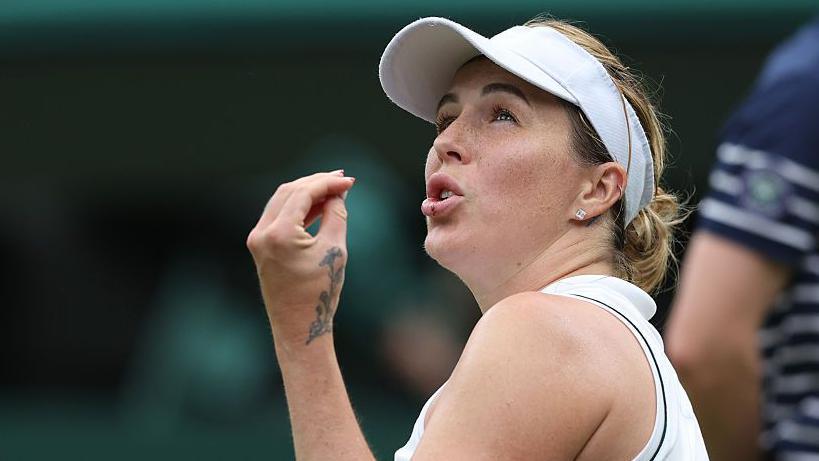The intersection of technology and sports often sparks debate, as recent events at Wimbledon have highlighted. While technological advancements promise greater accuracy and efficiency, they also raise questions about trust, fairness, and the very essence of athletic competition. This discussion intensifies when human elements, like the emotional investment of athletes and spectators, clash with the cold, hard data provided by machines.
A poignant example unfolded at Wimbledon when a crucial point was replayed due to a malfunction in the electronic line-calling system. Anastasia Pavlyuchenkova, convinced her opponent’s shot was out, found herself in a frustrating situation when the technology failed to register the call. This incident, compounded by the accidental deactivation of a line judge, led to a lost point and a sense of injustice for the player, who questioned if nationality played a role in the error. Such moments fuel the sentiment that technology, despite its potential, can sometimes detract from the spirit of the game.
This sentiment is echoed by players like Emma Raducanu, who has expressed disappointment with the new technology’s decisions. However, former Wimbledon champion Pat Cash offers a counter-perspective, arguing that electronic line-calling, despite occasional glitches, is inherently more accurate than the human eye. He points out that while computer errors can occur, the overall player satisfaction with the system remains high, and it’s still a significant improvement over human officiating.
The historical context supports the push for technological integration. Consider Diego Maradona’s infamous “Hand of God” goal in the 1986 World Cup – an incident that might have been prevented with modern AI officiating. Wimbledon’s electronic line-calling system, developed by Hawk-Eye, utilizes 12 cameras and AI analysis to track balls and player movements. While managed by human operators and using human voices for announcements, the system aims for objective accuracy.
The debate around trusting technology in sports is multifaceted, extending beyond mere accuracy. Professor Gina Neff from Cambridge University explains that human trust in AI is often linked to perceived context understanding. Humans excel at incorporating nuanced values and external factors into decisions, something machines, programmed with specific rules, may struggle with. The key, Neff suggests, lies not in pitting humans against machines, but in finding the optimal “intersection” where human judgment and technological capabilities complement each other.
This principle of “responsible AI” emphasizes human oversight. Yet, the implementation of technology in sports, such as VAR in football, has also faced criticism. The Premier League’s VAR system, while achieving high accuracy rates, has been marred by “significant human error,” leading to controversial decisions and growing player and fan frustration. Norway’s potential discontinuation of VAR underscores the challenges in achieving seamless integration.
Entrepreneur Azeem Azhar posits that a lack of perceived agency over technological development contributes to our unease. As technology evolves rapidly, it compels us to adapt our beliefs and the ways we interact with systems. This unease isn’t limited to sports; even in healthcare, patients often prefer human diagnoses for serious conditions like cancer, even when AI shows superior accuracy, highlighting a deep-seated need for human connection and validation in critical decisions.
Similarly, autonomous vehicles, despite demonstrating statistically lower accident rates than human drivers, face public skepticism. A significant portion of the British public reports feeling unsafe in self-driving cars, indicating a psychological barrier to complete technological reliance. This apprehension might stem from a subconscious desire for human control and the familiar experience of human interaction, even if it means accepting a degree of imperfection.
Sports journalist Bill Elliott observes that the pursuit of technological perfection in sports can inadvertently lead to a sterile, less engaging experience. While perfection is desirable, a life devoid of imperfections might become monotonous. The introduction of advanced technology represents not just an advancement but a shift into a new paradigm – a “perfect world” – where unexpected failures can be particularly jarring. Striking a balance between technological enhancement and the inherent human drama of sport remains the ultimate challenge.

